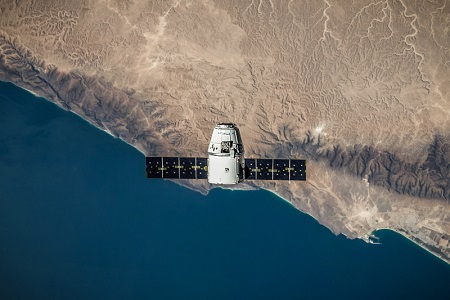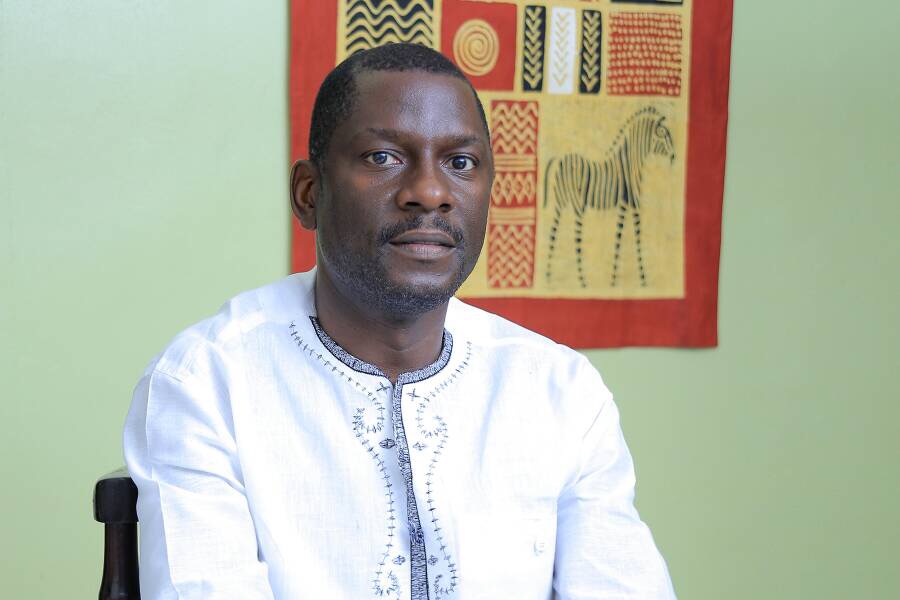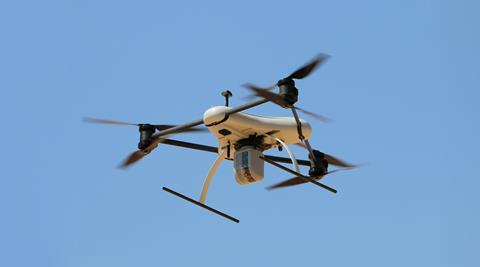KAMPALA: Uganda has completed the development of its first satellite in the history aerospace engineering
The low orbit satellite has now been set in motion for launch into space in August this year.
The news was broken to the country this morning at 8am in the Office of the Prime Minister’s auditorium where a group scientists, journalists, ministers and space science enthusiasts gathered to witness the historic moment.
The gathering was convened to witness the official handover ceremony of the satellite, PearlAfricaSat-1 Cube, to the Japan Aerospace Exploration Agency (JAXA) at a function which was held at Kyutech City in Japan.
The development of the PaerlAfricaSat-1 Cube, a 1U (10 cm by 10 cm by 10 cm) size satellite was developed in Japan by a cohort of Japanese and Ugandan scientists.
The Ugandan scientists who participated in its development are three students; Eng. Edgar MUJUNI, Eng. Derrick TEBUSWEKE and Eng. Bonny OMARA.
In addition to participating in developing the satellite, the students will obtain a Master’s degree in Space Systems Engineering to be completed in October 2022.
The low- key handover ceremony which was held in Japan this morning, was witnessed via satellite link by security minister Maj Gen Jim Muhwezi, Raphael Magezi (Local Government), Chris Baryomunsi (ICT) and Eng Irene Ssewankambo, the acting Executive Director Uganda Communications Commission (UCC).

It was hosted by the Minister of Science and Technology in the President’s Office, Hon Dr Monica Musenero.
“Thereafter, it will be transported to JAXA for final tests, and then handed over to NASA (on 18th May 2022) for transport to the International Space Station from where it will be launched into the Low Earth Orbit, tentatively by August 2022,” said Dr Doreen Agaba, the Team Leader, Aeronautics and Space Science, at Science Technology and Innovation-Secretariat in Uganda.
Dr Agaba told the gathering that following the handover, a group of Ugandans, with the help of the three students, will be tasked to install Ground Sensor Terminals (GSTs) in Uganda to facilitate communication to the satellite.
Minister Musenero on the other hand noted that it will later be handed to the National Aeronautics and Space Administration (NASA), a U.S. government agency to conduct its launch into space after undergoing all required tests.
“In addition to the information that will be received from PearAfricaSat-1, Uganda has been given an opportunity to utilize services of other satellites operated under the Joint Global Multi-Nation Birds Satellite (BIRDS) project.
The BIRDS Project was initiated in 2015 by the Kyushu Institute of Technology, Japan with the help of over ten partner institutions.
It was envisioned by Dr. Mengu Cho, Professor at Kyutech, who became Principal Investigator for the Project. The BIRDS Project trains graduate students from many developing countries in using innovative and cost-effective systems engineering during the course of a two-year satellite project.
The BIRDS project was selected by the Global Engineering Deans Council (GEDC) as the winner of the 2017 GEDC Airbus Diversity Award for diversity in engineering.
The Project has provided training for students from many countries including: Uganda, Bangladesh, Bhutan, Egypt, Ghana, Malaysia, Mongolia, Nepal, Nigeria, Paraguay, the Philippines, Sri Lanka, Sudan, Thailand, and Turkey.
Speaking during the handover, the Minister for Science Technology and Innovation, Hon. Dr. Monica Musenero Masanza said today is a remarkable day in the history of Uganda, as the nation celebrates the successful completion of Uganda’s first satellite.
Speaker after speaker who included Local Government Minister Raphael Magezi challenged the Ugandan space team to devote more time to explaining to Ugandans the benefits that comes with constructing a space programme.
This promoted Musenero to reveal that: “As a country, the development of PearAfricaSat-1 presents opportunities for the development of subsequent satellites locally in Uganda, meaning our engineers and scientists will be providing practical solutions to the challenges (agriculture, security, weather forecasts, climate change, infrastructure monitoring etc.) facing the Ugandan citizens as well as boosting the country’s internal capacity to develop the space science and technology industrial value chain,” she said.
The gathering was told the country stands to gain from the satellite in many ways including precision agriculture, ability to predict catastrophes such as floods, hailstorms, landslides, mountain cracks, epidemics, and weather patterns and devise mechanisms to prepare well and respond in time to save lives.

“This in the end will tie into the socio economic system of the nation and help solve our economic challenges, income deficits, unemployment and disease,” Dr Agaba responded.
“What this means for Uganda is new jobs, new careers, new training opportunities, ability to predict weather better by farmers and hence more yields, disasters, and act appropriately, “added Dr Musenero.
She revealed that with the new satellite, Uganda will be able to predict better especially disasters such as locust invasions, army worm infestation, and also sell information to neighboring countries.”
She added the satellite is an ambitious project, and the country will leverage it to develop a robust space sector.
“We see space services as an enabler to our economy from which numerous sectors of our country will benefit.
Musenero thanked President Yoweri Museveni for the “tremendous support towards the development of Uganda’s first satellite (PearAfricaSat-1).”
Benefits:
The PearlAfricaSat-1 has been specifically designed to provide research and observation data that will provide solutions in the following areas;
Weather forecast, Land, Water bodies and Mineral mapping, Agriculture monitoring, Disaster prevention, Infrastructure Planning and Border Security.
Background:
In April 2020, Uganda began the path to launch its first satellite into space by sending three graduate students to obtain training in satellite design, manufacture, and testing, as part of a multinational program known as the BIRDS-5 project.
One of the requirements for their training was to develop a cube satellite which is Uganda’s first satellite named PearlAfricaSat-1.
The BIRDS-5, which is being implemented in collaboration with Kyushu
Institute of Technology (Kyutech) in Japan, has four key objectives:
One: To develop, test and launch Uganda’s first satellite into space.
Two: To offer specialized training on satellite development to Ugandan graduate engineers, from mission conception/definition to satellite disposal.
Three: To establish Uganda’s first satellite communications network.
Four: To establish a space laboratory in Uganda, to facilitate knowledge transfer and construction of subsequent satellites to develop the Space Technology Industrial Value Chain.
Gratitude:
“I extend our gratitude to the Government of Japan, and the Kyushu
Institute of Technology for the high-level partnership exhibited from the project start to the end. We request for continued partnership and technical guidance in ensuring that Uganda achieves its dream to establish a functional space institute to ensure a sustainable presence in Space,” pleaded Dr Agaba.
“We are proud of our Ugandan engineers (Eng. Bonny, Eng. Edgar, and
Eng. Derrick) that have led us to this historical milestone, and we look forward to establishing a well functional Space Science and Technology Institute as guided by H.E. the President,” added Dr Agaba.
Once positioned, the country is expected to benefit from easing data gathering, especially on weather forecasts, which Uganda has been depending on for information for a long time from other countries.
She notes that effects of climate change such as drought have always taken Uganda by surprise since they lack accurate data.
The country is also expected to benefit from the satellite once positioned in the international space for easy monitoring of pests such as desert locust invasion, and monitoring the East African Crude Oil pipeline, among others.


















